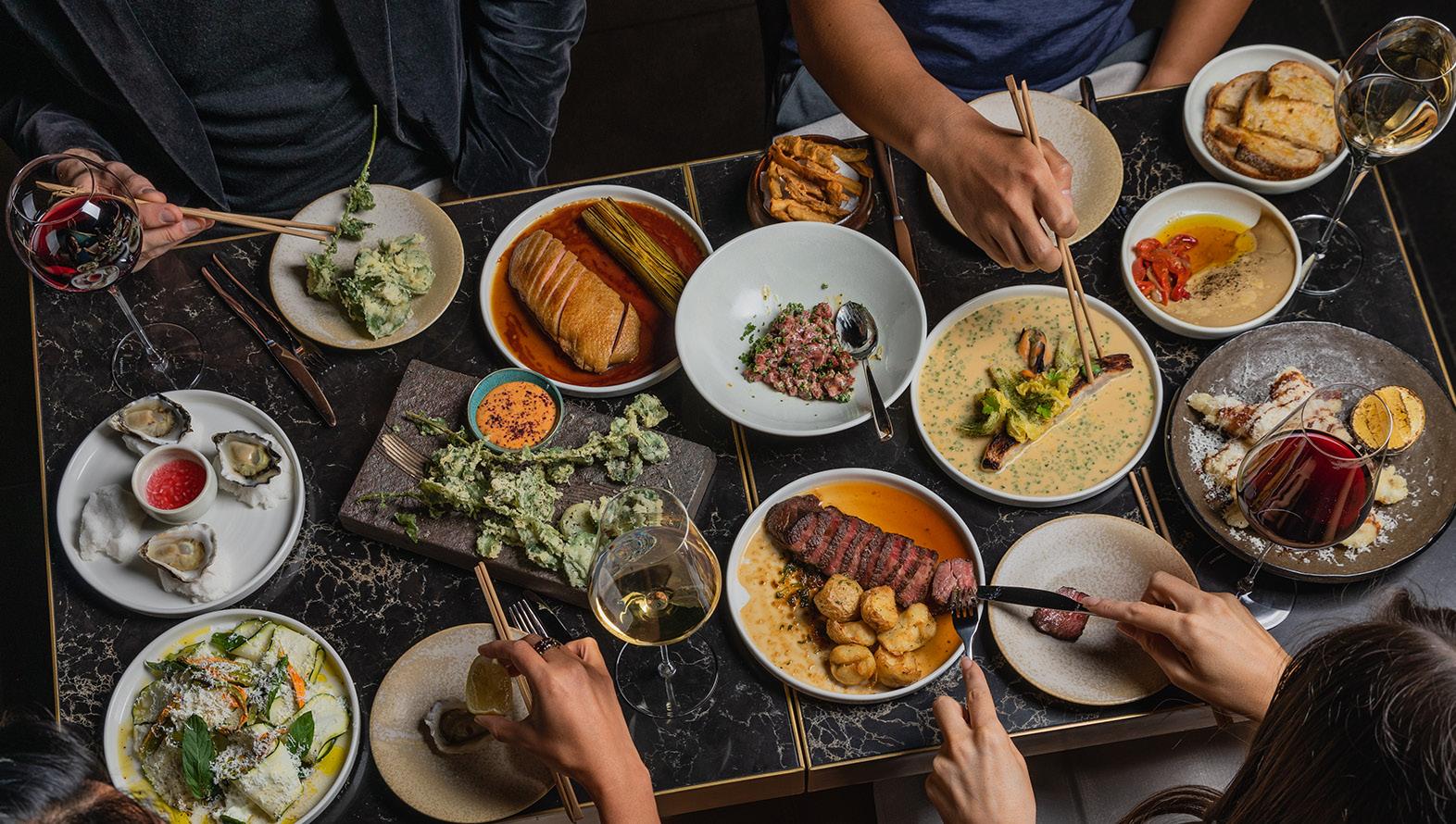
9 minute read
FEATURE: KAHII
Kissaten time
A foundational concept from Japan informs the Kahii experience.
WORDS Annabelle Cloros
PHOTOGRAPHY Kera Wong
SYDNEY IS A city that sticks to a schedule. Cafés open by 7am and lunch spots start serving around 11:30am. Both venues are usually done and dusted by 4pm — otherwise known as the shift change — the time where it is almost impossible to get a decent cup of coffee. Global destinations are a little less rigid when it comes to structure, and local venues are beginning to offer a more flexible offering that can morph with patrons throughout the day.
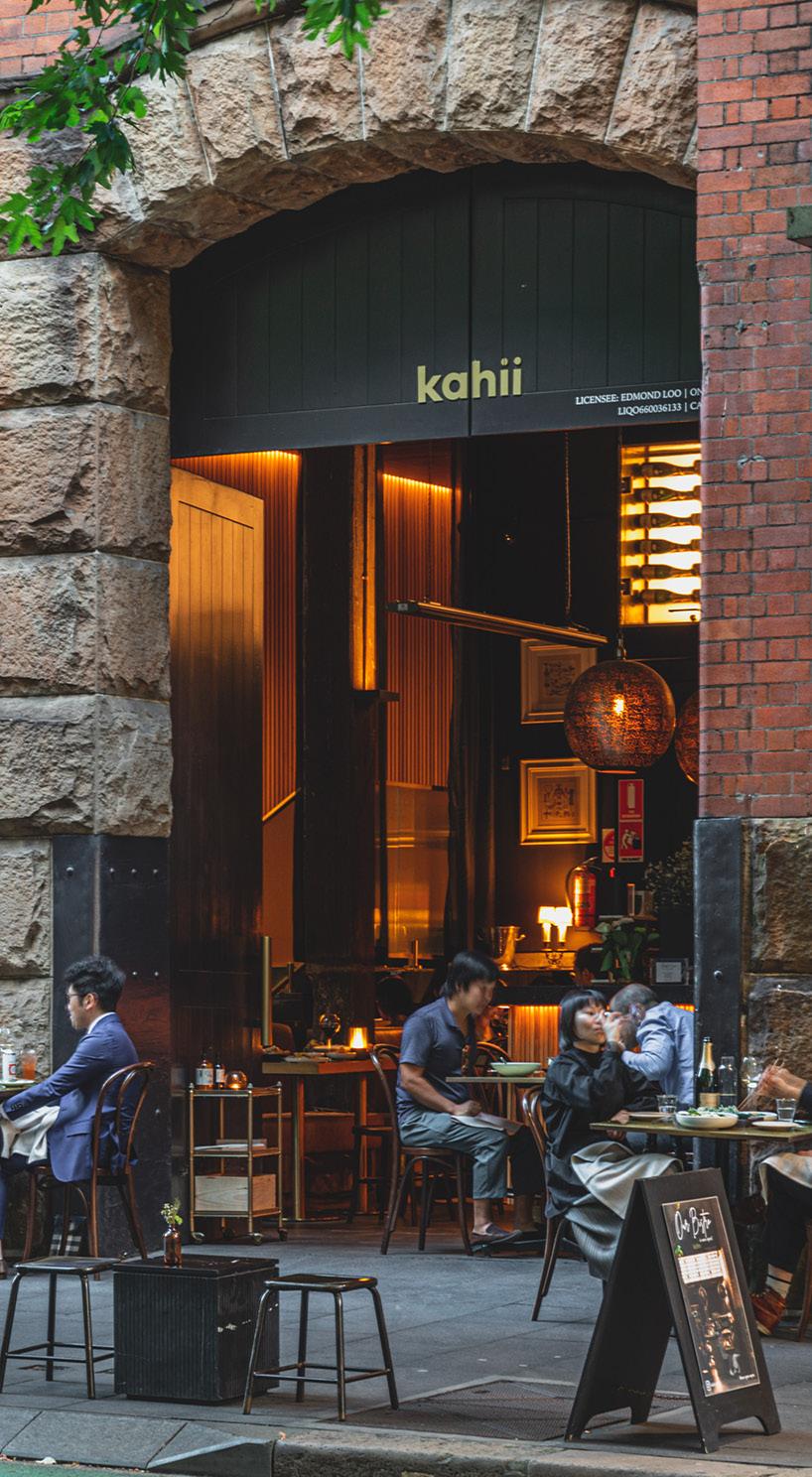
Enter the kissaten — a space that is less café and more coffee shop. The Japanese concept took off during the Showa era, with the tea-drinking rooms complete with record players spinning LPs. As time went on, kissatens evolved into more specialised places, with some paying homage to jazz and others coffee. The kissaten had its boom before mellowing out in prevalence and popularity as foreign coffee chains entered the Japanese market. But what’s old is new again, and the classic kissaten has reemerged under operators who are casting a modern lens over the staple.
Global takes on kissatens can be found in London, New York, and Sydney — of note is Kahii. The Japanese-inspired CBD café specialises in coffee, matcha and boutique pastries during the day before morphing into a wine bar in the evening that serves oldworld French wines and dishes from neighbouring fine diner Kuro.
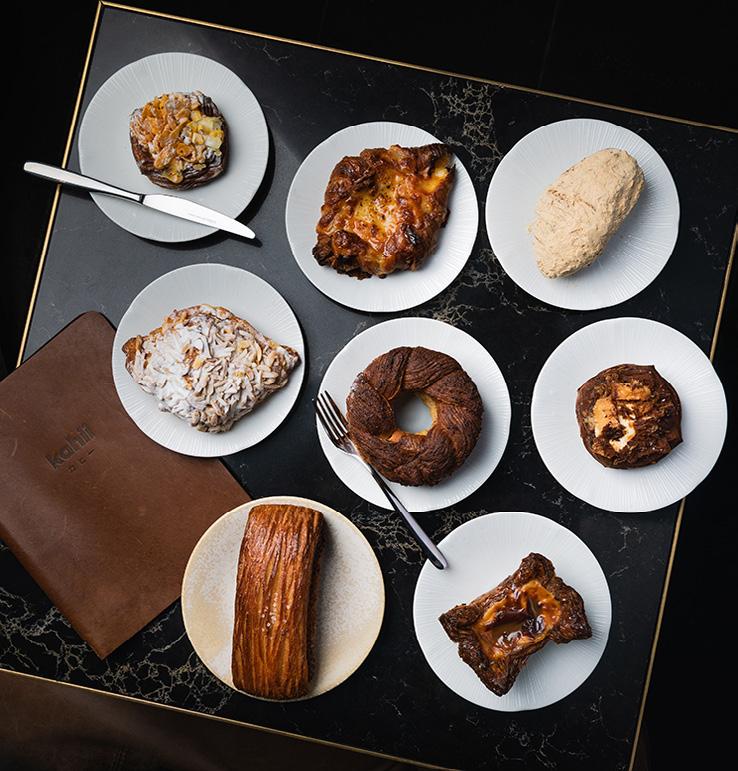
Hospitality speaks to Kahii’s Kei Tokiwa and Edmond Loo about sourcing green beans and roasting in-house, mastering matcha recipes, filling the 3-5pm gap in the market for coffee and switching into night mode.
Kahii’s modus operandi is two-fold. Specialty coffee is the first prong — and arguably, the backbone of a kissaten, but there’s a little more to it than that. “A kissaten is not just based on coffee, it’s a stop for salarymen before they go to work,” says Consultant Kei Tokiwa. “They go for a quick bite, a cup of coffee or something to drink. In a nutshell, it’s a café that really helped the economy back in the day and it’s where a whole workforce would hang out. Kahii is our take on kissaten culture and replicates the idea in a space that’s moody and intimate.”
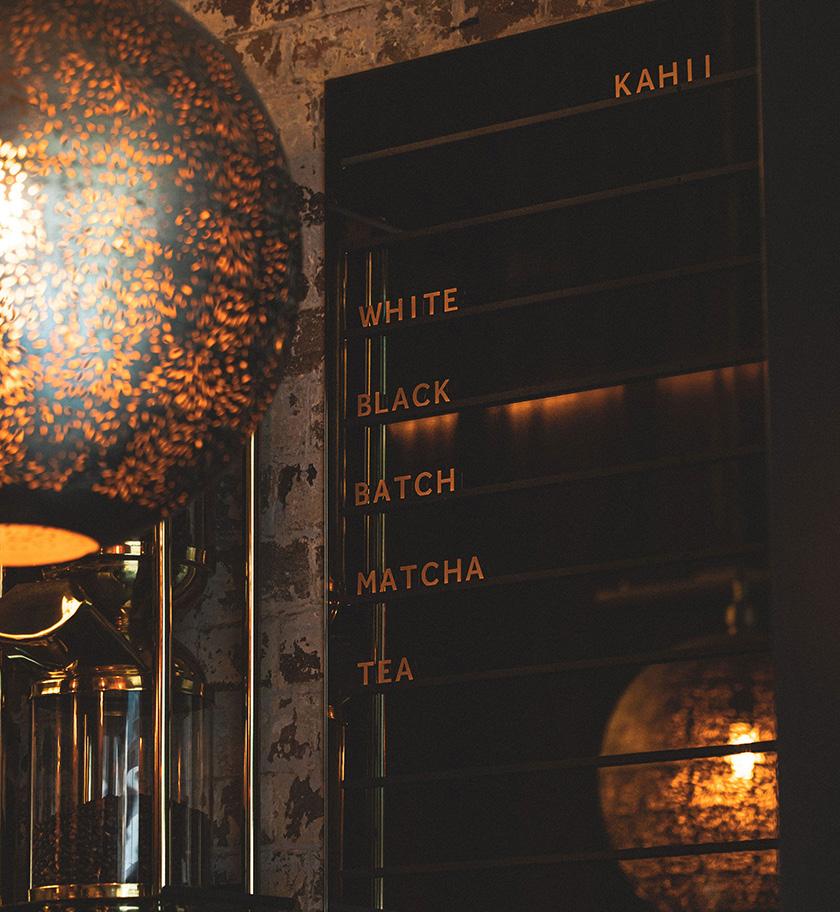
Thanks to its Kent Street location, CBD workers comprise much of Kahii’s customer base, which presented an opportunity for CoOwner Edmond Loo to establish a bespoke coffee offering which sees up to four single origins available at a time alongside a house blend. Loo sources green beans from monthly cupping sessions, going on to roast them at various facilities around Sydney. “Kahii is pretty much an overhaul on specialty coffee,” says Loo. “I’m quite liberal with the beans I procure, and we push everything equally, so the customer has a variety of specialty coffee.”
– Edmond Loo
Kahii’s house blend Gatsby is a combination of beans sourced from Brazil and Colombia, with Loo working with companies that specialise in each location. “The blend is quite stable, and we need two green beans that are available all year round,” he says. “Essentially, I have created a recipe to bring out the better characteristics of what each bean can provide.” Gatsby has notes of dark chocolate, toasted almonds, raisins and “occasionally butterscotch”, with the blend becoming an instant crowd-pleaser among an older generation of coffee drinkers.
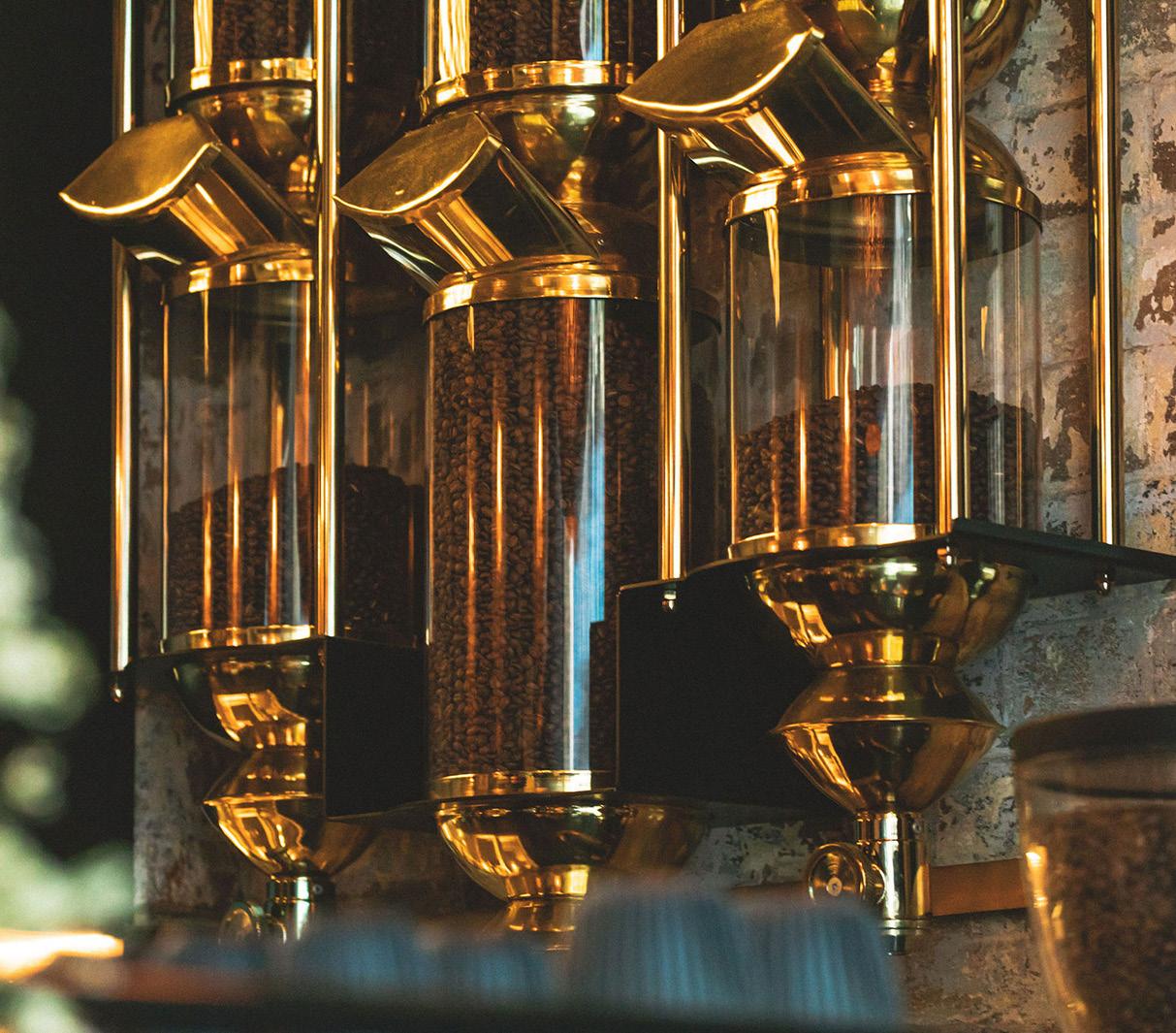
But there’s something new in the works for those who prefer a fruitier flavour profile. “There are more younger people around, so I’m roasting another house blend that’s catered to people who are more involved in the third wave of coffee,” says Loo. “The recipe has a 50:50 ratio of beans from Ethiopia and Colombia and gives me a more aromatic cup of coffee.”
A seasonal approach is naturally as relevant for coffee as it is for food. Kahii switches out its roster of single origins in line with availability and application. For example, Kenyan beans have recently been used for drip and Colombian beans for iced batch brew. “It all depends on the apparatus I’m using,” says Loo.
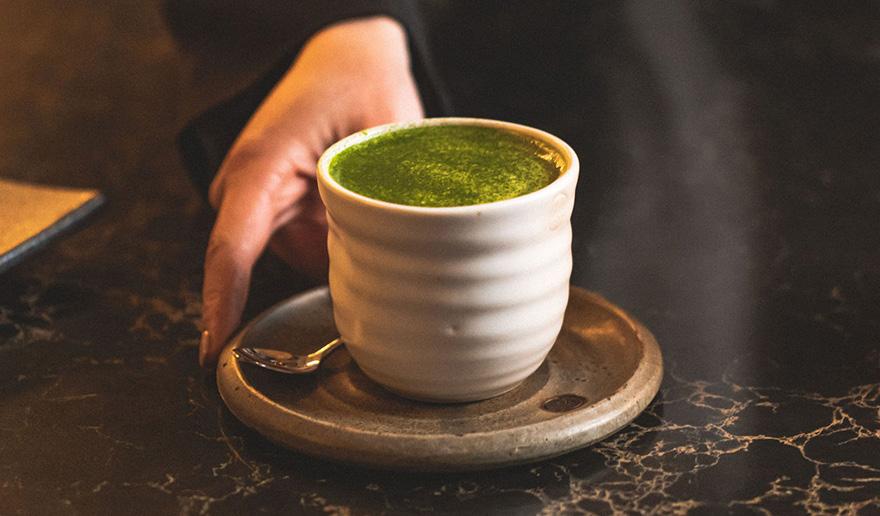
Matcha’s presence and popularity continues to grow, with various beverages becoming commonplace at a range of cafés. Kahii works with Simply Native in Surry Hills to source its matcha, with the team participating in tastings to sample different grades of matcha before selecting the best option. “We have settled on a high-grade powder that’s not ceremonial because we run it through milk,” says Tokiwa. “Ceremonial-grade matcha tends to be too delicate in terms of flavour, so we needed something that would hold up through the process of warming up milk [and against] oat milk, too.”
Kahii’s matcha latte took months to develop, with everything from region to weight taken into consideration. “We do a lot of recipes,” says Loo. “The roast degree of the matcha and the region are factors in terms of grams. You need a darker roast to cut through milk, so it ends up being a little bitter in the finish, so we whisk in honey with the matcha powder so it has balance. The honey we use doesn’t have any eucalyptus in it; it’s quite mellow and doesn’t take away from the flavour of the matcha.”

While some start their day with a matcha latte, others prefer it as an afternoon-slump solution — and the same goes for coffee. Kahii keeps its coffee machine on until 5pm on weekdays (except Monday when the venue closes at 3pm). “We find most cafés in the city close around 3pm,” says Tokiwa. “But people have a more flexible work schedule now or they might finish work later. There’s also the hospo crowd who work nights and probably don’t get up at 8am for coffee. The aim is to fill that need for a great cup of coffee and we will run the café later in the future if it all goes well.”
But come 5:30pm, it’s time to get into some wine — French wine, to be specific. Co-Owner Alan Wong is a big fan of drops from Burgundy, which go hand in hand with sister venue Kuro’s French–Japanese culinary direction. “We wanted to introduce guests to classic old-world wines as well as focus on smaller houses that you would find in fine-dining establishments as opposed to standard wine bars,” says Tokiwa. “We are also looking at the Jura region which is quite trendy at the moment and have about 20 per cent newworld wines on the menu.”
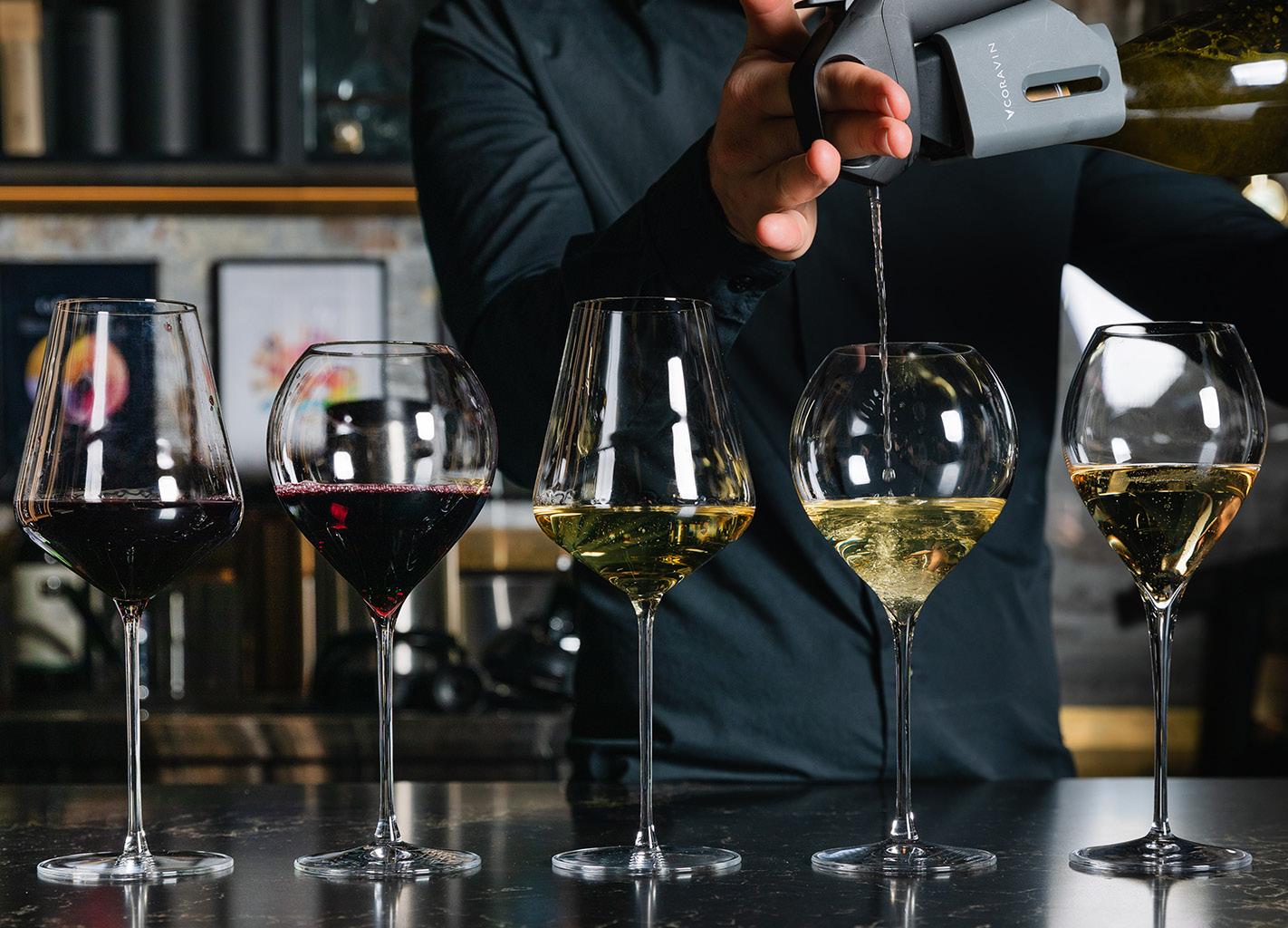
Champagnes are prevalent on the drinks menu, with organic and biodynamic producer Larmandier-Bernier listed alongside other grower Champagnes. “We’ve also set up the Burgundy list from north to south in terms of the regions and appellations and are looking for the best-in-house producers,” says Tokiwa.
“If we hear about a smaller house, we’ll look into it. We do have a variety of clients coming in, so the younger crowd tends to go for more high-acidity styles such as a wine from Katsunuma Jyozo Winery in Japan, while the older crowd goes for the classics.”
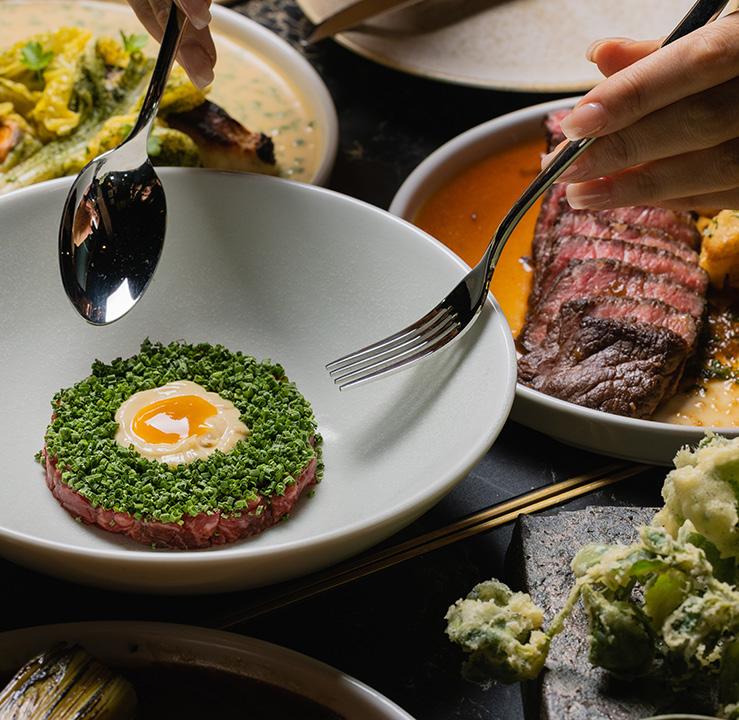
Drinks come first at the wine bar, with Kuro’s Executive Chef Taka Teramoto designing the menu around the wine offering. Plates span Appellation oysters with rhubarb mignonette “which is the first thing a guest would get, so we match it with something chalky and creamy like a Cremant”, says Tokiwa as well as the drinkfriendly snack of saltbush tempura with cocktail sauce and yukari.
– Kei Tokiwa
Kahii also carries a small selection of sake, which is the recommended pairing with sashimi, while a dry Riesling or light Gamay works with the 2GR Wagyu tartare topped with egg yolk jam and anchovy emulsion. Larger plates are available for those looking to make a meal out of it, with the protein-centric dishes covering roasted cod with beurre blanc; 16-day dry-aged duck with red wine and leeks and MB9+ Blackmore Wagyu with potatoes. “The duck goes with a Pinot from Burgundy and the fish with a Chardonnay or something that has gone through a malolactic process,” says Tokiwa. “I like the Wagyu with a Grenache we have from the Rhone Valley.”
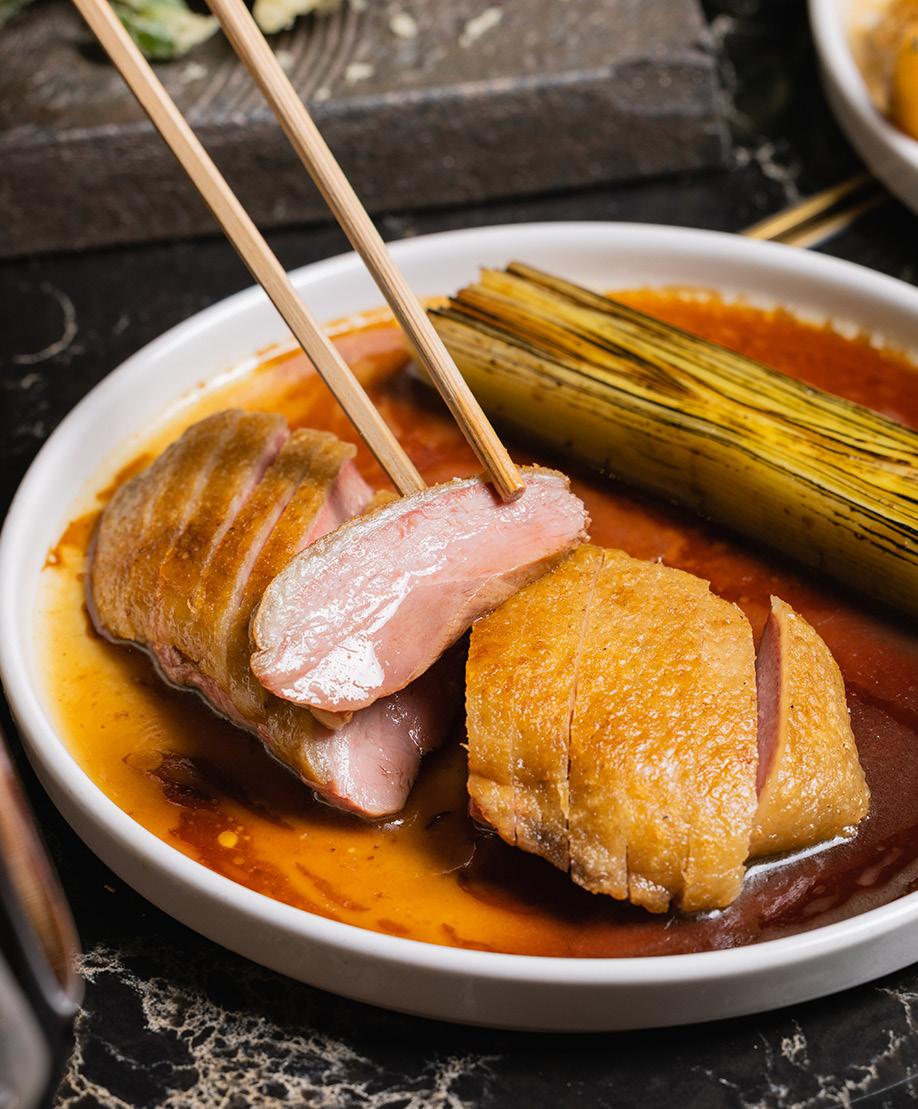
The venues of 2023 are less about rigidity and more about flexibility, pouring coffee for those who like a caffeine hit at 4:30pm and wine an hour later for patrons in need of an after-work tipple. A flex concept has mass appeal, and Kahii is part of a wave of establishments ushering in a new chapter for Sydney’s hospitality scene.
- Kahii is located in the Heritagelisted Kelco House
- The bar serves a boutique range of sake
- Pastries from Tenacious Croissant are on offer during the day
- Burgundy wines take pride of place on the wine list








